2022 Volkswagen Golf R: Review From Another View
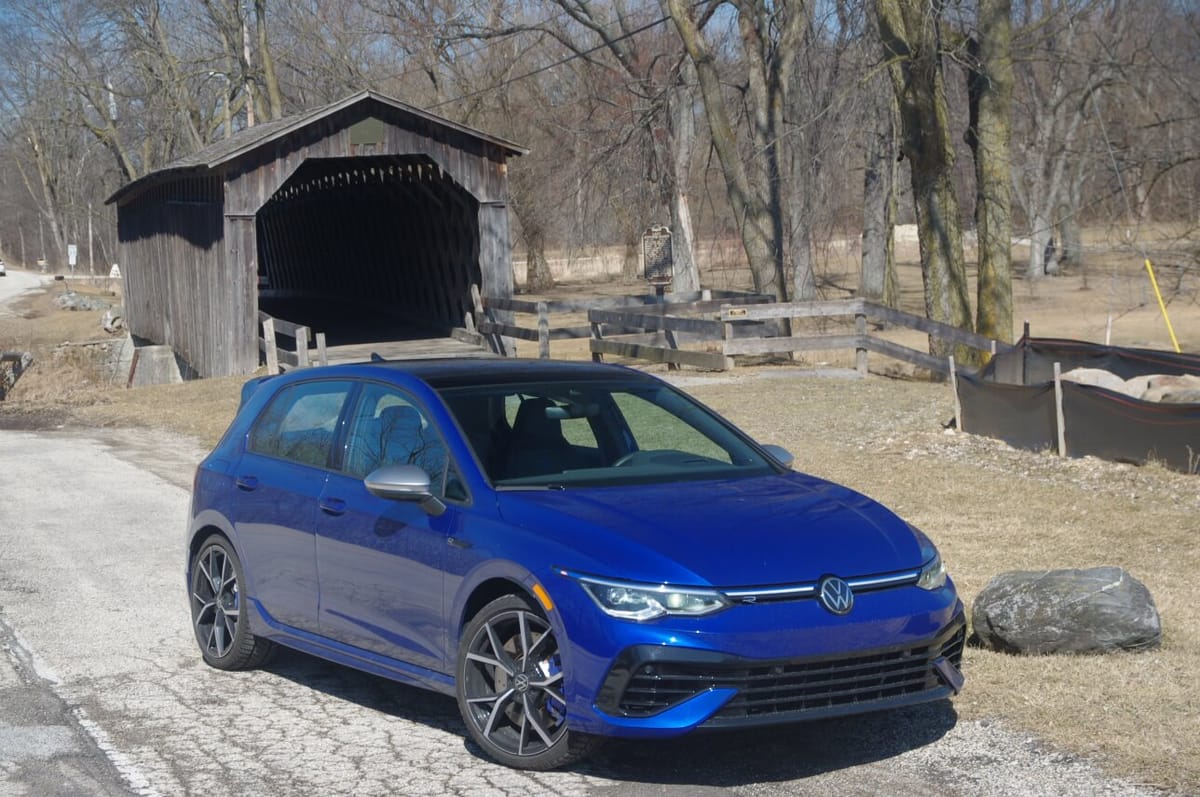
VW Golf R: Deft Handling, Smudgy Controls
VW invites you to rediscover high-horsepower fingerpainting. Choose your canvas, a snaky roadway is perfect. Your paint pot is a turbocharged 315-hp Lapaz Blue Metallic over Titan Black Leather Golf R with 19-inch wheels. Get in. Adjust the shell-like front throne. Grab the steering wheel. Apply the pedals. There are three through the 2024 model year. Press start. Wham! Zero-to-60 mph is yours in less than five seconds. The nearly $44,640 R, as tested, inspires confidence—it’s nimble, powerful and stable.
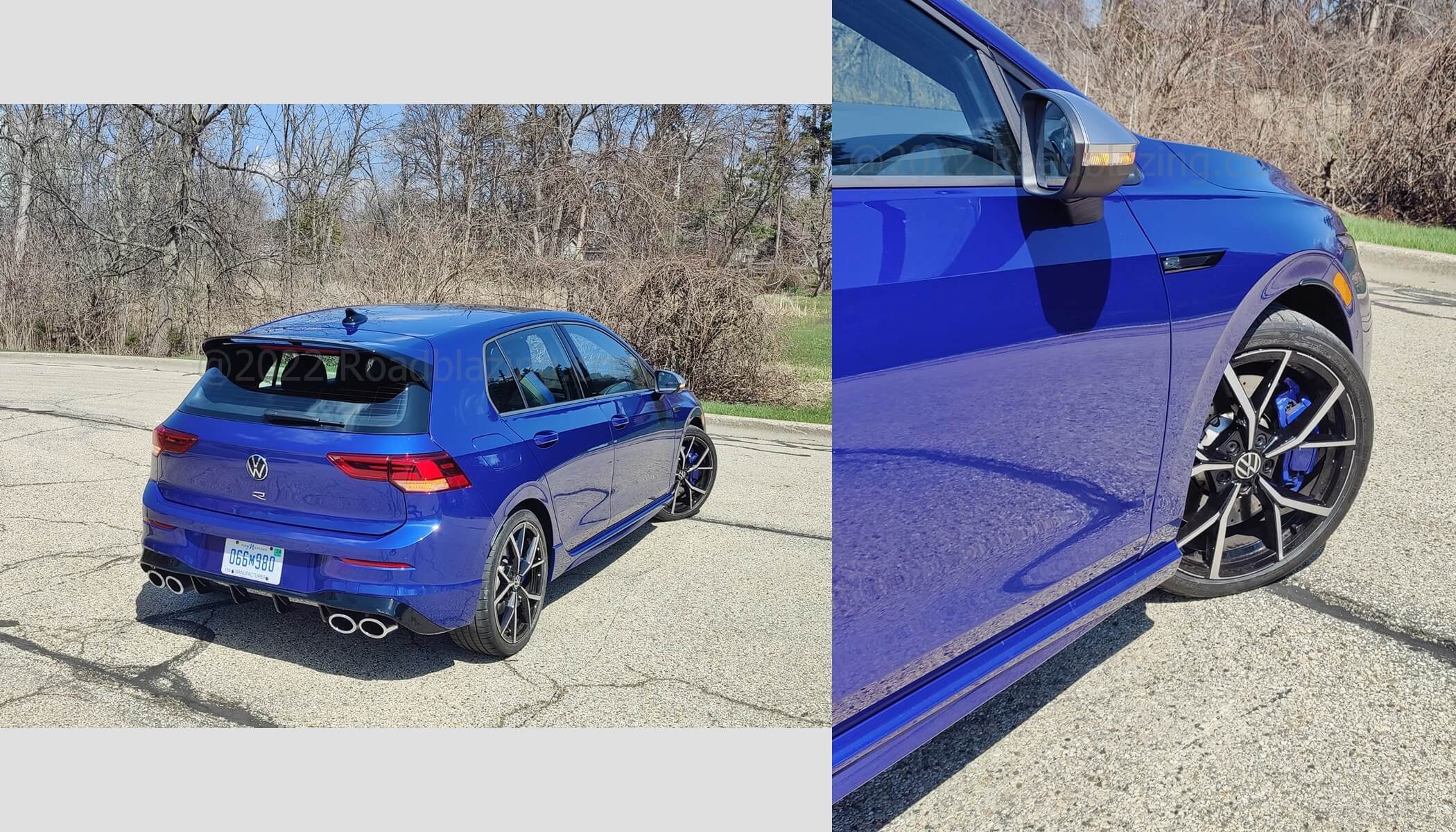
You feel like Jackson Pollock because you can pour the R down the road. It sticks well, too. Steering effort is splendid, the chassis is seemingly unflappable and directional changes are prompt. The R isn’t ruffled by expansion joints, road twists or railroad tracks. This R-tist went to automotive dance school. VW says the R routes wheel power to reduce understeer.
The R stops well, too. You modulate effective two-piece, cross-drilled front rotors clamped by blue calibers via a firm, communicative brake pedal. Two-part discs have braking surfaces cast on metal spokes which extend from the hub or hat. This manages brake rotor heat, reducing fade and vibration.
Pick the six-speed manual transmission. Stir the gears; the engine’s broad power band and idle-speed modulation make clutch-pedal work simple—you can one-foot launch it in second gear. Shifter gate feel, especially the three-four slot, seemed vague. Come to a complete stop before applying the electric parking brake; it’s aggressive.
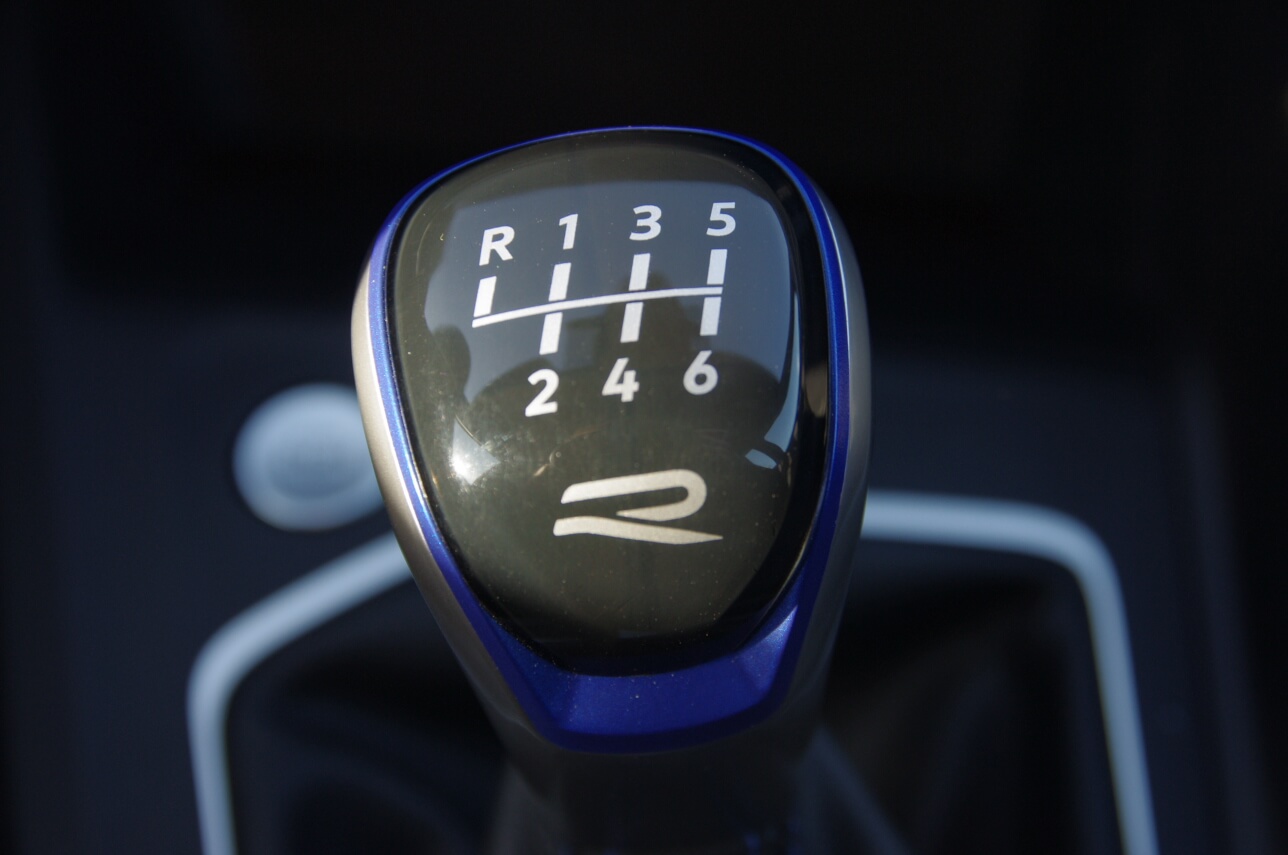
VW’s hill-hold brakes reduce rollbacks. This feature engages when you meet certain conditions and firmly apply the foot brake. That said, if the car rolls backward, while you’re in neutral or have the clutch pedal depressed, the back-up camera deploys.
Touched By a Demon
There’s a fly in this car’s painterly ointment. VW mucked up its motoring magic with a touch/talk/video display interface. This setup replaces conventional gauges, buttons and dials. Driver’s get a 10.25-inch configurable Digital Cockpit. It’s part of a black plastic band from the dash’s left side to the center stack. On the cockpit’s left, you’ll find lights and defroster shortcuts. Farther right, there’s a wide 10-inch touchscreen infotainment system.
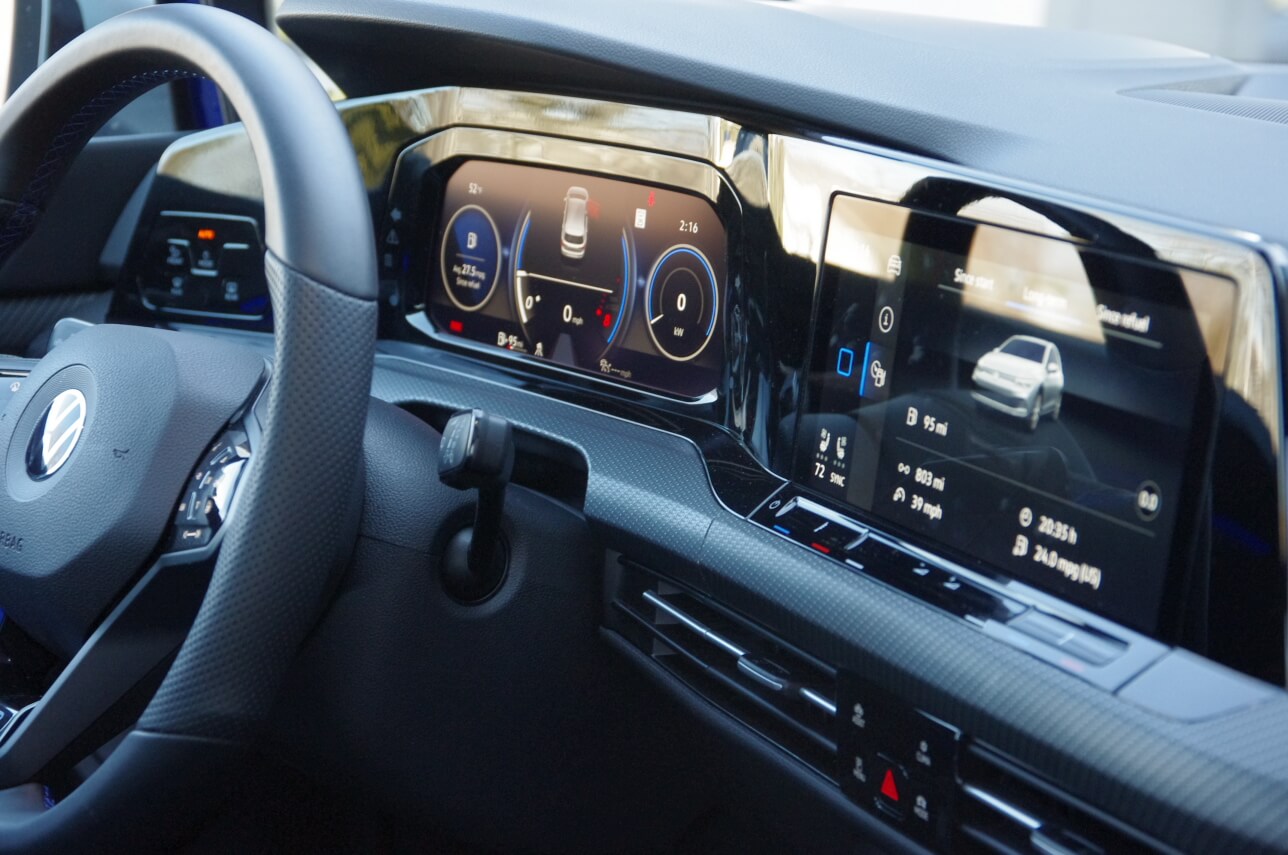
Further complicating your fingers is the steering wheel’s touch-action “switchgear.” It’s nicely illuminated day or night—almost gem-like. But it’s too much and too wrong. It feels like you’re poking at marbles. I’d say VW “fixed” something that wasn’t broken. Since my road test, VW announced its revamped models will get conventional steering wheel push buttons.
Regardless, the Golf R’s user interface remains problematic. Let’s say you decide to set the cruise control after deciphering where to touch the left steering-wheel spoke. The next step requires a deft tap on either side of the space for selecting the radar-cruise distance. All too often I “brushed” distance instead of picking speed. Likewise, tapping the virtual home button on the touchscreen is like trying to operate a vending machine while twirling a hula hoop.
In addition, VW doesn’t illuminate the temp adjustment touch points or volume touch slider on the trough below the touchscreen. Instead, there are at least four lit dedicated touch spots a bit lower where you pick climate, drive mode, drive assist and self-parking. These shortcuts summon touchscreen menus. Therefore, you can skip the Apple-like home icon, which lets you survey the app tiles—sometimes grayed out when you’re in motion. Should you wish to turn off lane-keep assist, press the button on the turn signal and then tap ok on the steering wheel. The touchscreen, in contrast, won’t let you tweak drive assists while moving.
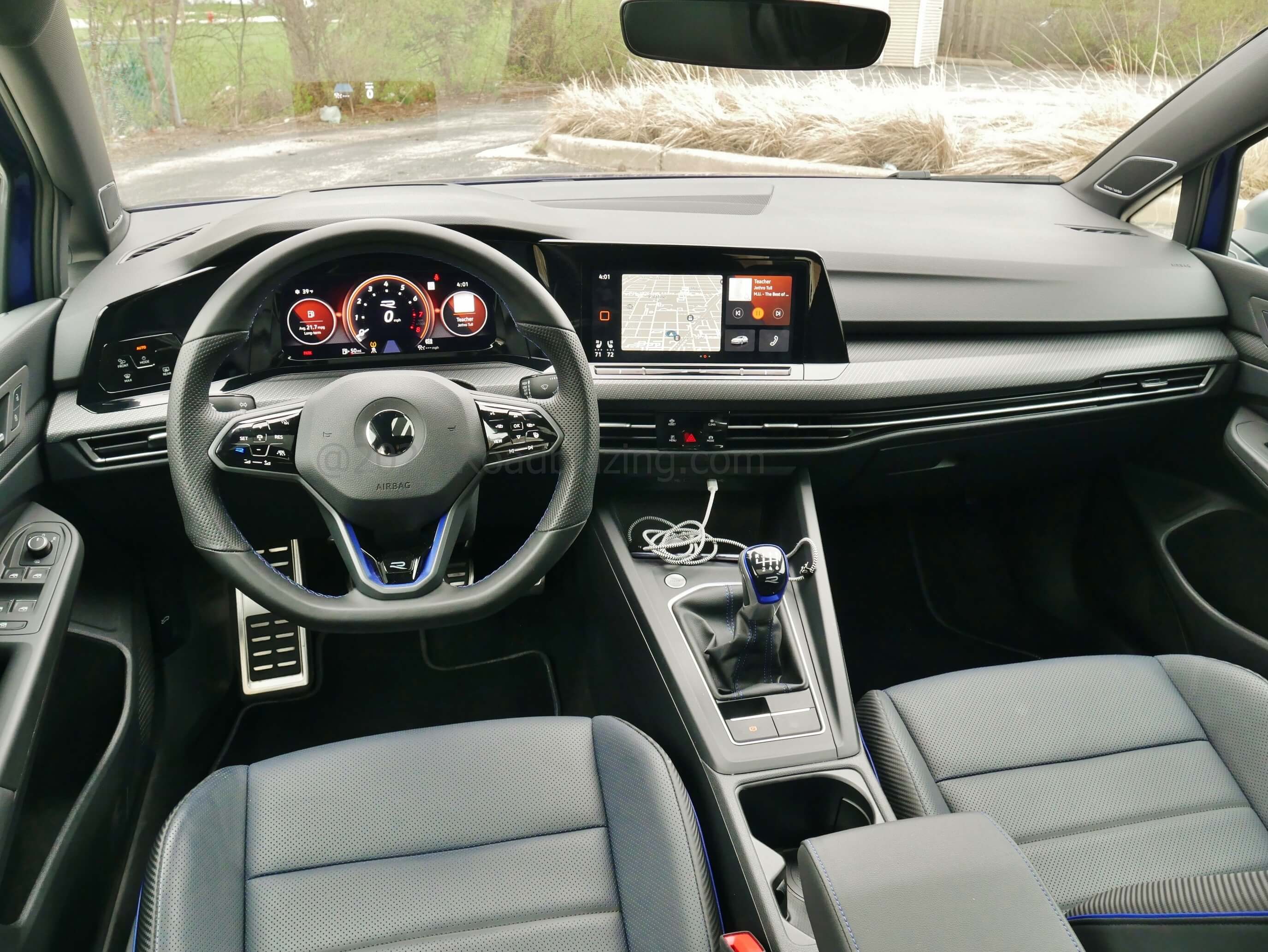
The climate control’s menu contains three folders: Classic View, Smart Climate and Air Care. Yes, Virginia there’s a cold-feet setting. If your brain’s overloaded by choices, VW’s Byzantine climate setup will cause a mental meltdown. Leave it in automatic.
Let’s return to that prince of darkness climate trough. Simultaneously touch the blue and red areas with two fingers and you'll trigger the seat-heat menu. You didn’t see that one coming, did you? Tap with two fingers and you’ll cycle through bun-baking levels. That’s a tad easier than heading to the touchscreen for climate and then worming your way to the seat menu. The front thrones chill, too. A steering wheel touch spot on the right spoke enables the tiller’s heater. It’s too close to the nicely contoured grab spots.
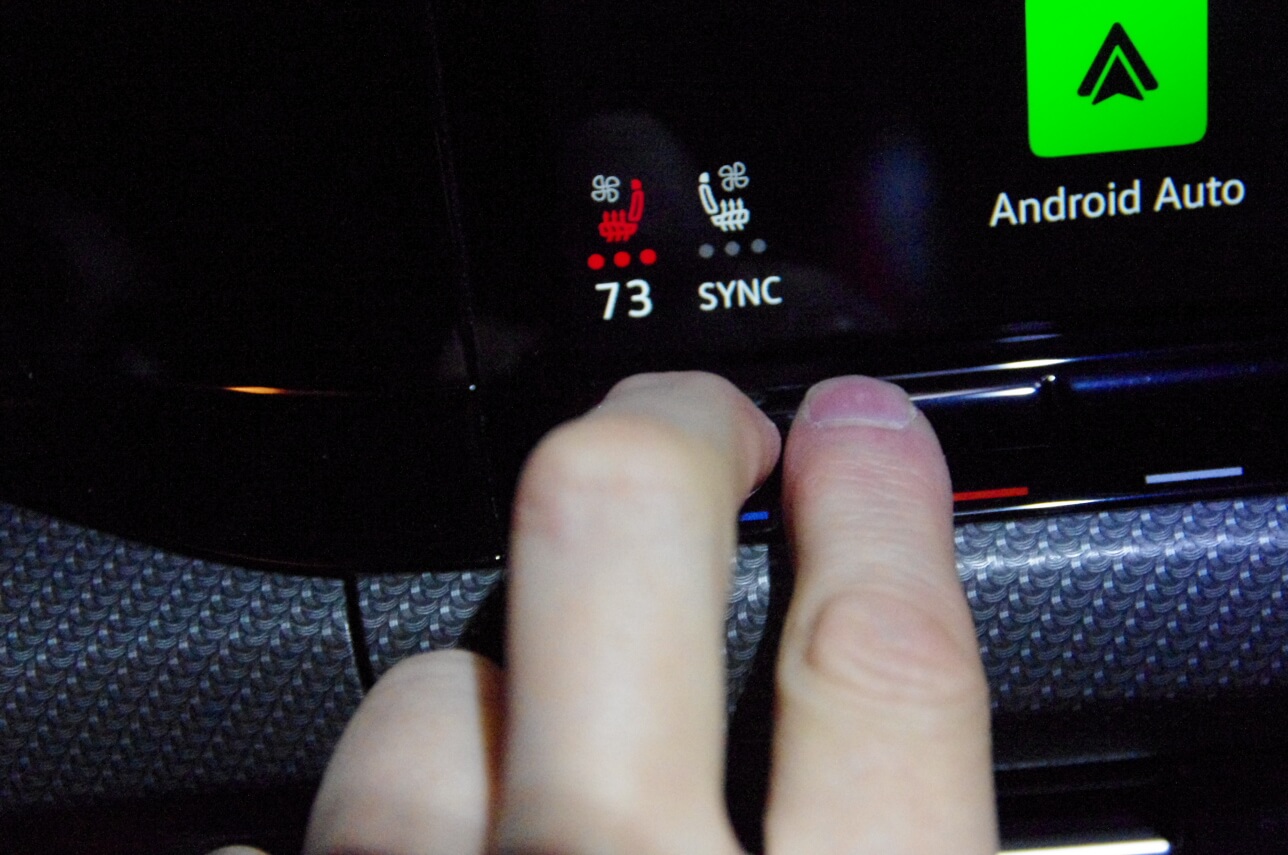
Finger work manages the motorized front seat. A convenience mode slides it back for easier entrance or exit. Fine. But a stick-shift car requires one to depress the clutch pedal in order to start it. You’ll get your morning stretch with this setup. There's a cure. Just press the start button one time and the seat slides forward to your favorite spot. Then, press the clutch pedal followed by the start button.
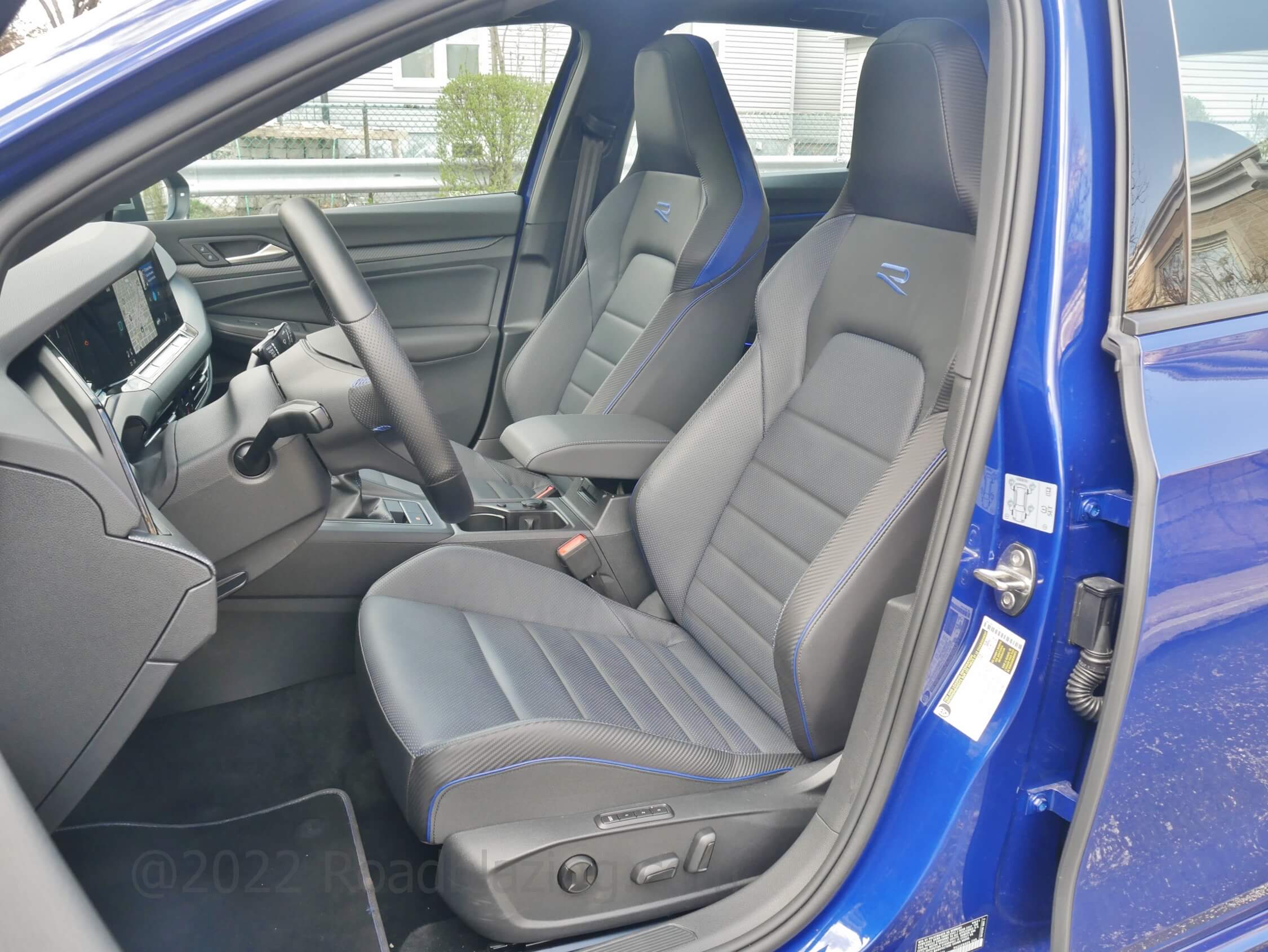
Fingers Crossed
There is a blast of sorts: finger-selected chassis/engine tuning called drive modes. These settings make driving, as with finger-painting therapy, more pleasurable. May I direct you to the steering wheel’s blue R logo? Rub it for good luck. Then, the touchscreen’s drive mode menu explodes with options. R enables, via yet more touching, a special mode for the Nürburgring’s north loop. Other choices include, race, drift, sport, comfort and individual.
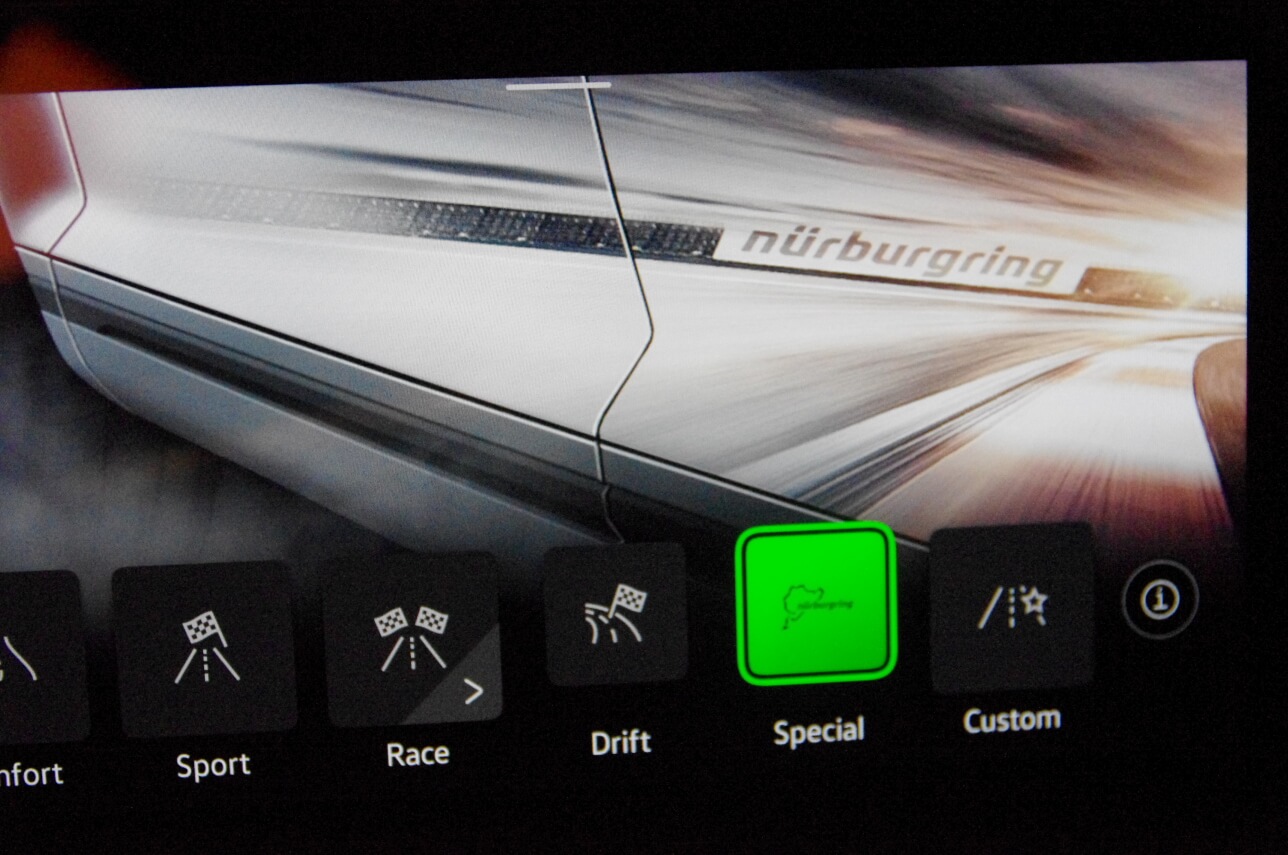
These modes vary engine sound, idle speed, dampers and chassis dynamics. I found VW’s sound effects acoustically satisfying neither too loud nor blatantly fake. You can crank up the turbo wastegate effect, listen to the baritone blast of exhaust notes or dial it back to a mild-mannered hum. I found this entire affair—there are sensors at the tailpipes—a pleasant surprise.
The Golf R’s snubbed suspension seems resilient despite rolling on 19-inch wheels wearing 235/35R19 tires. Body roll is minimal; the car feels like it's an ingot. A creative driver gets support—switches for power seat controls. The right front seat has power back rake but manual controls for height. The rear seat is upright; supportive for two. It split folds with a pass thru for skis. Those in the back get face vents, seat heat and a touch panel.
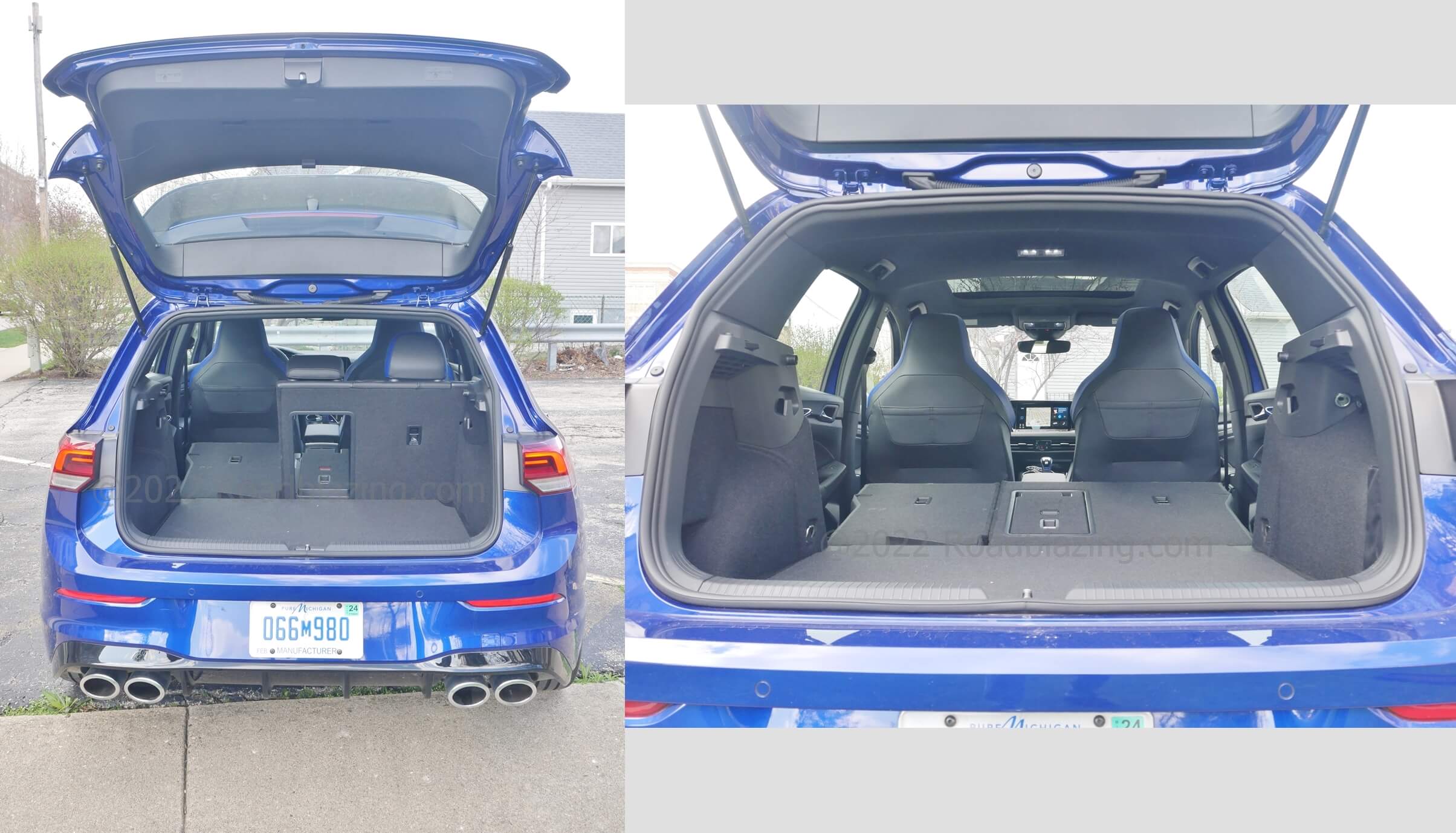
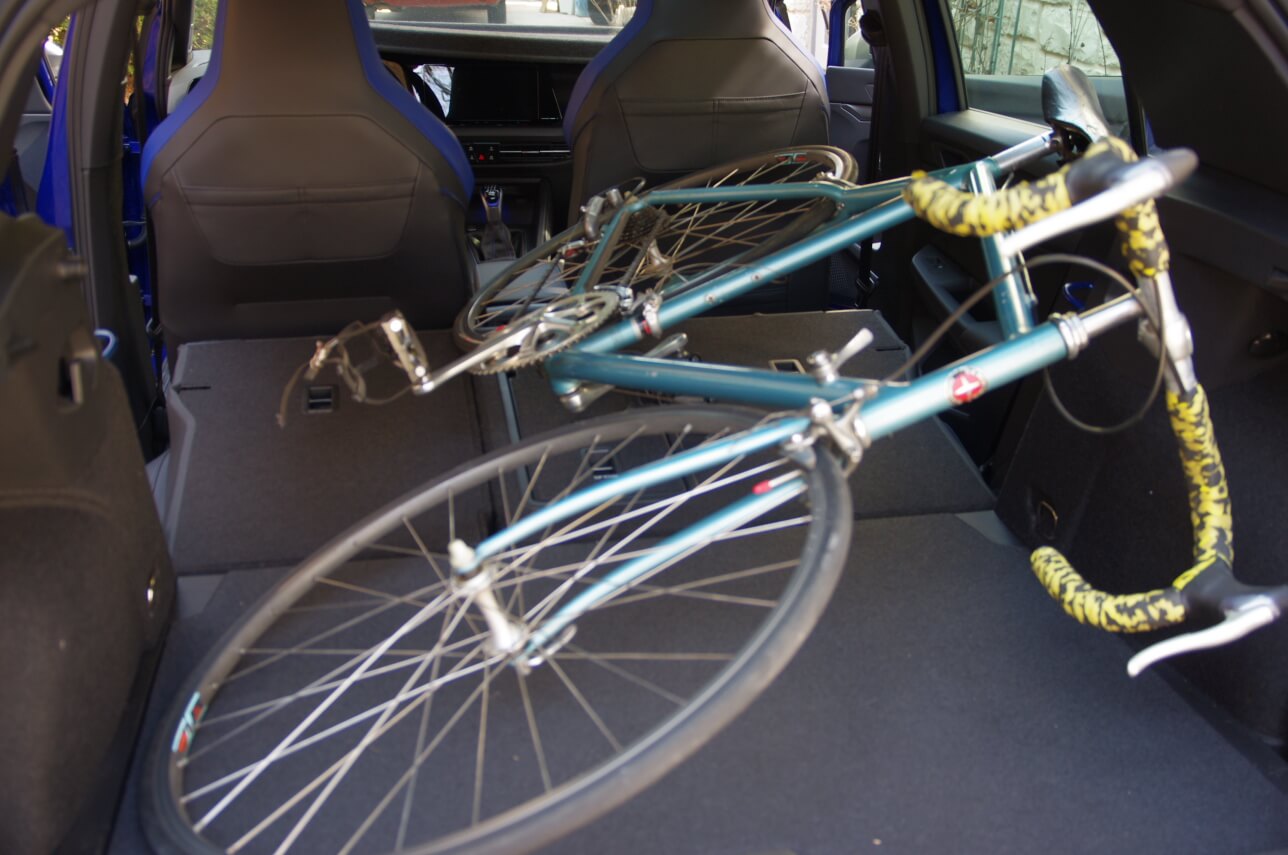
The R’s driving dynamics paint a pretty picture. It’s a confidence inspiring machine. Its driver-control interface, however, muddles the picture, as touchscreens, touchpads and talk replace “snickety” buttons. The EPA fuel economy numbers are 20-mpg city, 28 highway and 23 combined. I averaged 27 mpg overall. The R requires premium fuel. VW supplies several eco driving tips: a sixth gear reminder, advice on depressing the clutch pedal and an excessive idling warning.
Speaking of warnings. The lane keeping assist, when in Travel Assist flashes a red visual and triggers a chime should it think your hand isn’t on the steering wheel. This tripped several times even though my right hand was on the wheel. Flick the hoop slightly to turn off the alert.
Body Language: Aesthetics
This VW’s thin horizontal ode to a grille punctuated by its rondel looks like a proper Volkswagen Golf. Other front inlets are more than eye candy. They route air to the front brakes. The LED auto high-beam headlamps with poor-weather mode effectively illuminate scenery.
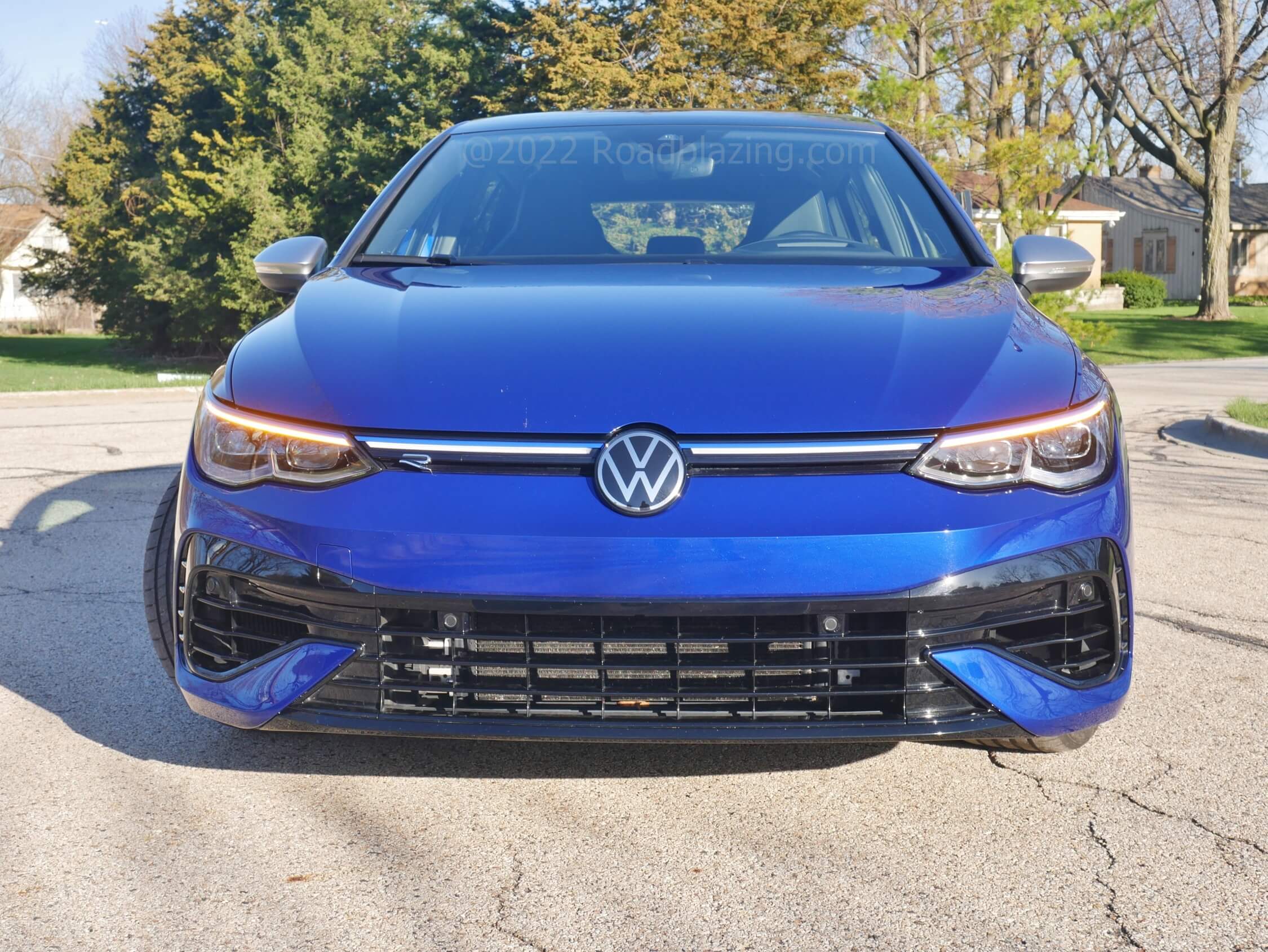
Inside, VW went hardcore with plastics. Some items have obvious flashing. VW offsets this with interior ambient LED lighting—often keyed to drive mode—and an R puddle light. There’s no spare tire. You can slide a road bike with its wheels attached into the rear hatch and then close it. The windshield offers excellent sightlines. My dealer says Rs fetch $5,000 more than their MSRPs.
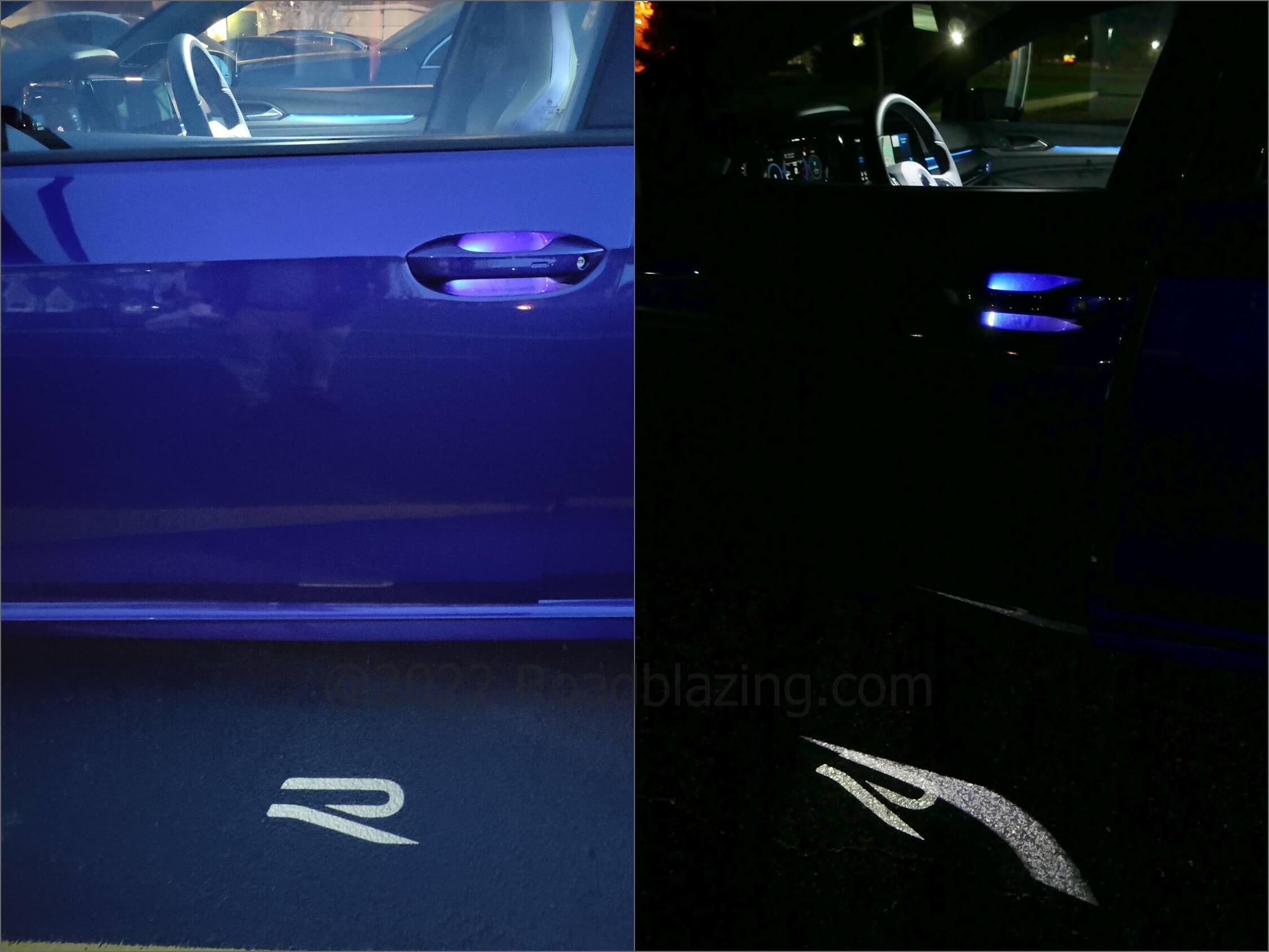
The R can park itself. Touch a dedicated spot and a menu guides you. Yes, it tells you which direction to move and when to brake while it twirls the steering wheel.
Finger Pointing
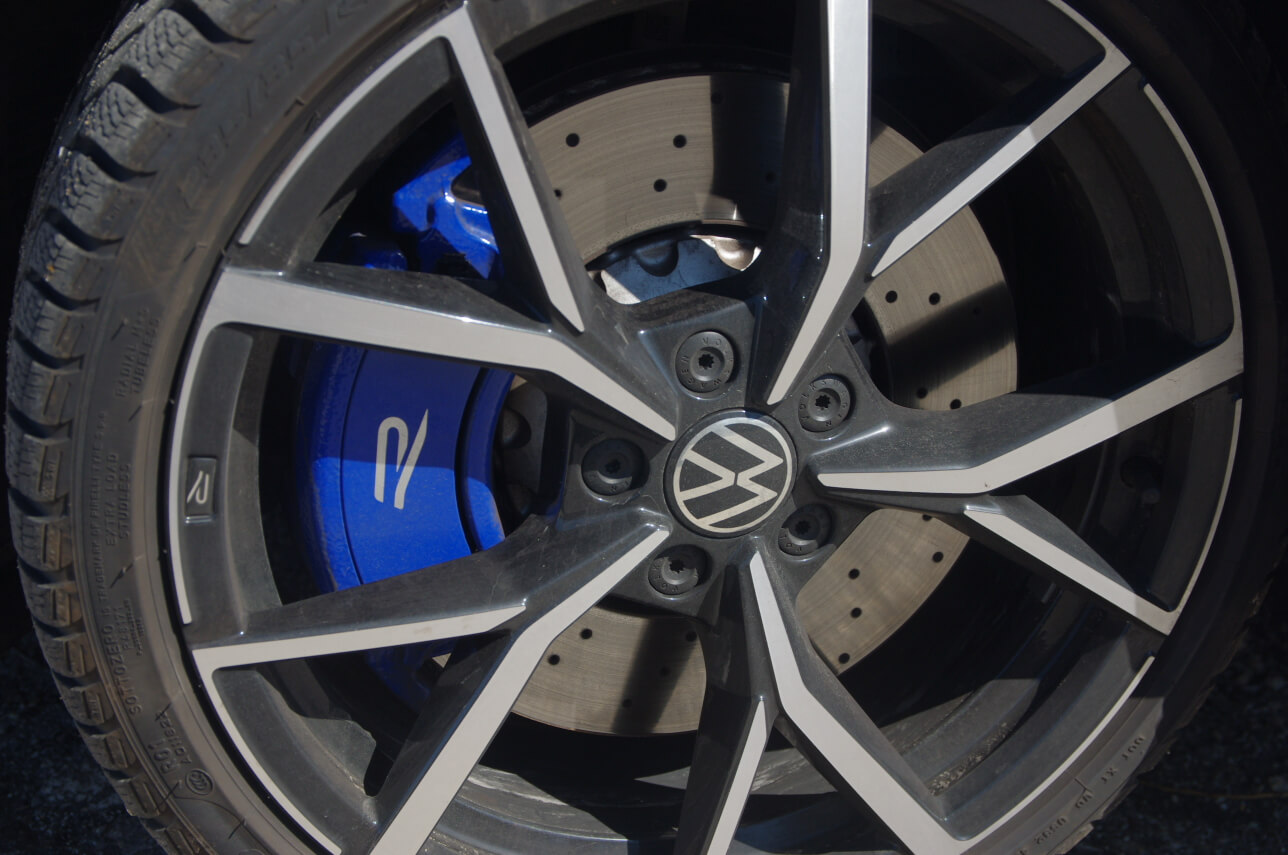
VW’s R offers poise and power. Its sleek profile evokes traditional, practical Golf design language. VW’s touch interface, however, feels wrong. You can work around some of this asking Helga, your onboard assistant, to help. Regardless, VW’s navigation system is easily stumped. And the nav menu, which first displays a Tinkertoy graphic of previous destinations, requires a second tap to see the map. Wireless Android Auto and CarPlay are standard.
It depends on your canvas. The R motors on roadways with competent air. In contrast, the cabin’s touch-sensing controls are an error.
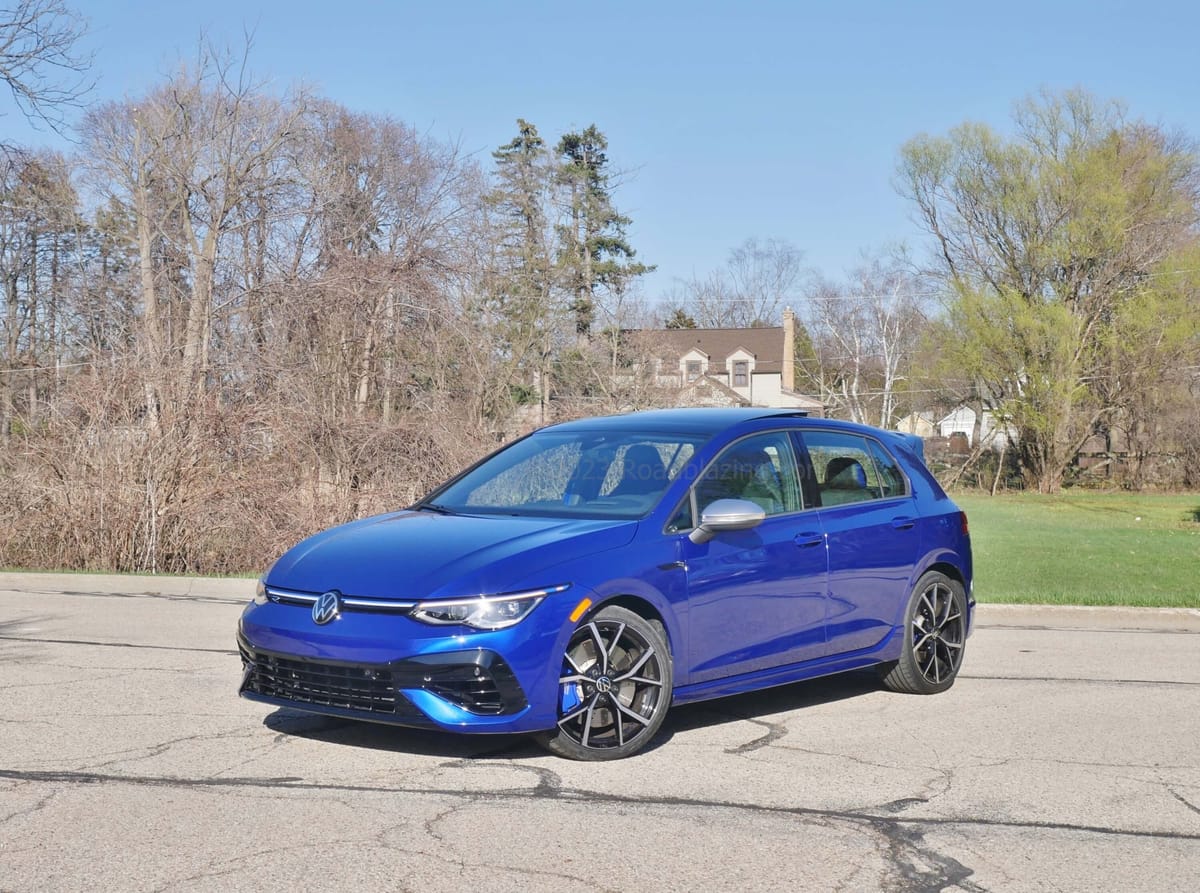

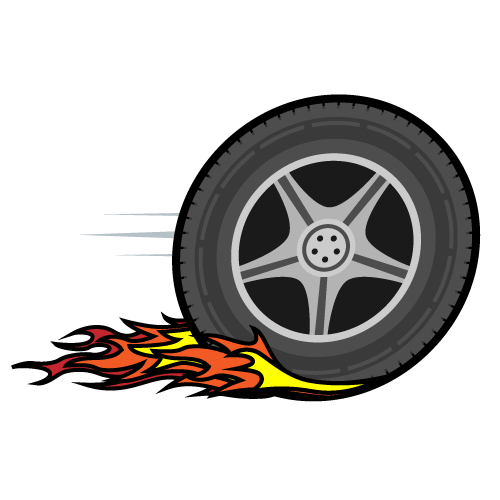
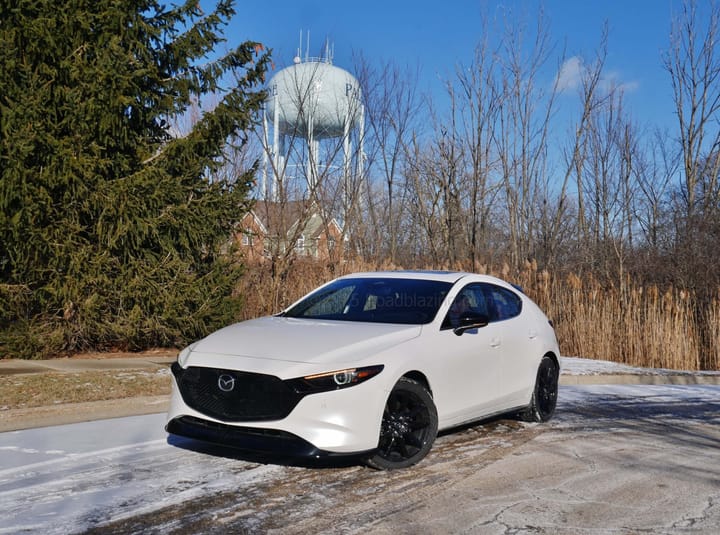

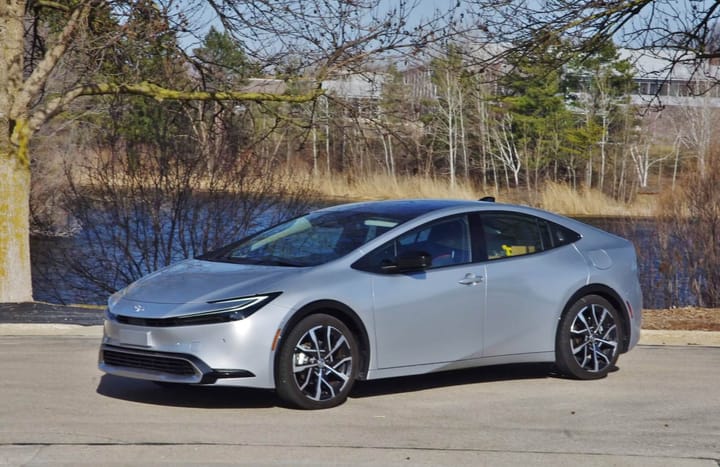
Comments ()